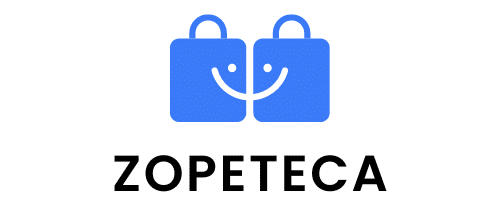In the age of technology, it’s quite astonishing how the simple act of washing hands can have such a profound effect on healthcare. Ensuring compliance with hand hygiene in hospitals is an essential factor in preventing the spread of harmful infections. This is a crucial responsibility, not only for the healthcare professionals like doctors, nurses, and ward staff, but also for patients and hospital visitors.
However, maintaining an optimal level of hand hygiene compliance is not always an easy task. This is where technology-enabled nudges come in, providing an innovative solution to bolster hand hygiene practices. But what exactly are these nudges and how can they improve hand hygiene compliance in healthcare settings?
A découvrir également : How Can Precision Nutrition Personalize Dietary Plans for Athletes with Specific Performance Goals?
The Power of Nudging
The concept of nudging was first introduced by scholars Richard Thaler and Cass Sunstein. It refers to the idea of subtly guiding individuals towards better decisions without restricting their freedom of choice. In the context of healthcare, nudging can be used to promote positive behaviors, such as compliance with hand hygiene standards.
Technology-enabled nudges utilize data-rich environments to prompt desired behaviors. These interventions may include real-time reminders, performance feedback, or social comparisons, all designed to encourage hand hygiene.
Sujet a lire : Does the Regular Practice of Autogenic Training Alleviate Symptoms of IBS?
In a hospital setting, one effective nudge might be a sensor-based system that monitors hand hygiene compliance. When a healthcare worker enters a patient’s room without sanitizing their hands, the system could issue a gentle reminder. This real-time nudge serves as a powerful prompt, reinforcing the importance of hand hygiene.
Impact of Nudges on Hand Hygiene Compliance
In recent years, several studies have examined the impact of nudging interventions on hand hygiene compliance in healthcare settings. These studies provide valuable insights into how technology-enabled nudges can be utilized to improve hand hygiene practices.
In one study, a group of researchers used electronic monitoring systems to provide real-time feedback to healthcare workers about their hand hygiene practices. The data showed a significant increase in hand hygiene compliance following the introduction of these nudges. The researchers concluded that real-time feedback was a powerful tool for improving hand hygiene compliance in a hospital setting.
Another study explored the use of social comparison as a nudging strategy. In this intervention, healthcare workers received feedback about their hand hygiene compliance compared to their peers. The study found that this social comparison nudged healthcare workers to improve their hand hygiene practices, leading to a higher overall compliance rate.
Tailoring Nudges to Hospital Environments
While these studies highlight the potential of nudges, it’s important to understand that these interventions should be tailored to fit the specific context of each hospital or ward. What works in one setting might not work in another, and a one-size-fits-all approach may not yield the desired results.
For example, a busy ward might benefit from a simple, unobtrusive nudge such as a subtle audio-visual reminder. In contrast, a quiet, less hectic ward might benefit from a more direct nudge, such as a personal reminder from a fellow staff member.
Moreover, the design of these interventions should also take into consideration the preferences and perceptions of the healthcare workers who will be receiving these nudges. An intervention that is perceived as helpful, rather than intrusive or punitive, is more likely to be accepted and have a positive impact on hand hygiene practices.
The Role of Technology in Nudging
Technology plays a vital role in enabling these nudging interventions. Sophisticated sensor-based systems can monitor hand hygiene practices and deliver real-time feedback. Digital platforms can analyze data on hand hygiene compliance and provide personalized feedback to individual healthcare workers.
Furthermore, technological advancements can augment the effectiveness of nudging interventions. For instance, machine learning algorithms can analyze hand hygiene data to predict when and where lapses in compliance are likely to occur. This predictive analysis can help in designing preemptive nudges that prevent these lapses before they happen.
Overcoming Challenges
While nudging presents a promising approach to improving hand hygiene compliance, implementing these interventions in a hospital setting is not without challenges. Privacy concerns, resistance to change, and technical issues are just some of the hurdles that need to be overcome.
Thus, it’s important to carefully plan and manage the implementation of these interventions. This includes involving healthcare workers in the design and rollout of these nudges, addressing potential privacy concerns, and ensuring that the technology used is reliable and user-friendly. It’s also essential to monitor and evaluate the effectiveness of these nudges on an ongoing basis, making adjustments as necessary based on feedback and data.
In conclusion, technology-enabled nudges hold great promise in improving compliance with hand hygiene in hospitals. By subtly guiding healthcare workers towards better practices, these nudges can contribute to a safer and healthier hospital environment for all.
Enhancing Hand Hygiene with Data-Driven Decision Making
Data-driven decision making is an essential element of technology-enabled nudges for hand hygiene compliance. Hospitals are increasingly utilizing sensing technology to monitor and improve hand hygiene practices. This technology captures data about hand hygiene events, such as when and where healthcare workers sanitize their hands. Utilizing this data, hospitals can make informed decisions about how to improve hand hygiene practices and enhance infection control.
For instance, an electronic monitoring system, like Sani Nudge, utilizes sensor technology to provide real-time feedback to healthcare workers on their hand hygiene compliance. This system can alert healthcare workers if they forget to sanitize their hands before or after patient contact. Performance feedback like this can serve as a powerful nudge, prompting healthcare workers to improve their hand hygiene habits.
Furthermore, hospitals can use this data to identify patterns and trends in hand hygiene compliance. For instance, if the data shows that hand hygiene compliance tends to drop during certain times of the day or in specific areas of the hospital, interventions can be focused on these problem areas.
Another area where data can drive decision making is in the design and implementation of nudging interventions. By analyzing the data on how healthcare workers respond to different types of nudges, hospitals can tailor these interventions to be more effective. Google Scholar and PubMed are valuable resources to find articles and research studies on this topic.
The Future of Hand Hygiene Compliance: Predictive Analysis and Preemptive Nudging
The use of predictive analysis is an emerging trend in the field of technology-enabled nudges for hand hygiene compliance. Machine learning algorithms can analyze hand hygiene data to predict when and where compliance lapses are likely to occur. These predictions can be used to design preemptive nudges that prevent these lapses before they happen.
For example, if the predictive analysis identifies that a healthcare worker is likely to forget to sanitize their hands during a particular part of their shift, the system can provide a preemptive reminder. This type of nudge not only helps to improve hand hygiene compliance but also empowers healthcare workers by providing them with the tools they need to make better decisions.
The future of hand hygiene compliance lies in leveraging technology to deliver timely, personalized nudges that are based on data-driven insights. As Anne Mette, a renowned expert in infection prevention and control, notes, "The key to improving hand hygiene compliance is to make it easy for healthcare workers to do the right thing. Technology-enabled nudges are a promising tool in this regard."
Conclusion: Embracing The Nudge for Better Health Care
In an era where data and technology are revolutionizing health care, it is crucial for hospitals to leverage these advancements to improve hand hygiene compliance and prevent the spread of infections. Technology-enabled nudges provide a powerful tool in this regard, offering innovative solutions to reinforce hand hygiene practices.
The power of nudging lies in its subtle approach to guiding healthcare workers towards better decisions without restricting their freedom of choice. By utilizing data-driven decision making and predictive analysis, hospitals can tailor these nudges to be more effective and preemptive.
However, the successful implementation of these nudges requires careful planning and management, considering privacy concerns, resistance to change, and technical issues. Engaging healthcare workers in the design and rollout of these nudges and monitoring their effectiveness on an ongoing basis is equally important.
As we move forward, it is clear that technology will play an increasingly significant role in promoting hand hygiene compliance. Embracing the nudge can lead to a safer and healthier hospital environment, benefiting not just healthcare workers, but also patients and visitors. So, let’s wash our hands, embrace the nudge, and work towards better health care.






